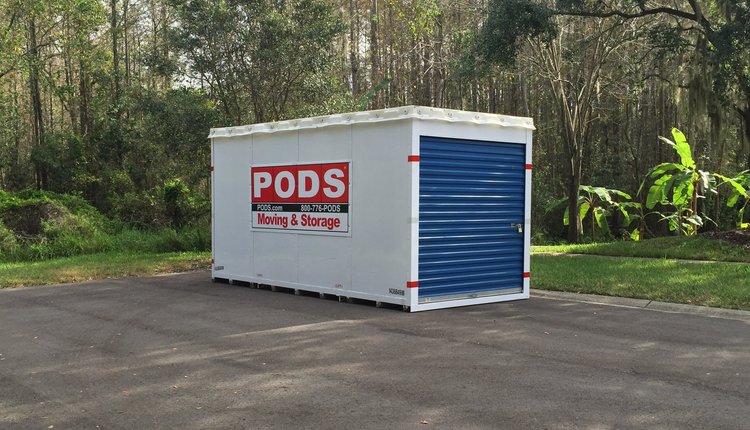Hi,
DHL recently announced a major reorganization of its DHL USA US
As usual, we will continue to provide updates to this and other industry development as they become available.
Please note that the opinions expressed herein are those of the individual commentator and do not necessarily represent those of PARCEL or its employees, nor should they be construed as endorsement by PARCEL.
Thanks.
Dan ORourke,
Editor, PARCEL
If you did not hear the news, DHL has announced that it is going to outsource its domestic uplift in the United States
There were some other announcements: DHL is closing 34% of its service centers (also referred to as stations or terminals). DHL is going to lay off somewhere between 1,500 and 1,800 people. This is over and above the 600 people they recently laid off in a different cost-cutting move.
DHL announced that in conjunction with some of its service center closures will come the outsourcing of deliveries to the ZIP Codes currently served by those facilities to the United States Postal Service (USPS).
You can get some of the details of the changes by going to DPWN.com and listening to the Press conference and, separately, the investors presentation. You can download the Deutsche Post (DP) PowerPoint, but the impact TO YOUR BUSINESS can not be easily extrapolated from the slides. DHL is controlling the spin on its announcements extremely well and really revealing few details.
If you begin to wade through all the things that have come out in the last few days, there are some things one might construe.
First, DHL has informed its employees that as many as 60 terminals will close June 30. Shippers have less than a month to prepare, react, change routings, etc.
On or before July 1, the employees have been told, DHL is pulling down scores of what are called feeder flights. These are aircraft that are stationed at an airport say, for example, Dallas that await an incoming flight from the hub and fly ongoing shipments to airports like Corpus Christi, Midland/Odessa or San Angelo, Texas. As of this writing, DHL has not provided your sales representative with a list of the scores of feeder flights that are coming down in less than 30 days. This change may profoundly affect service your packages receive to these areas.
For now, DHL is not closing many of the service centers associated with the grounded feeder flights, but the incoming shipments will now have to be trucked in from some other airport. This means that the deliveries to those cities and their environs will now intuitively have to occur much later in the day, or on the following day, and shipments originating in those feeder flight cities will have to be trucked back to a city with an aircraft. This will mean DHL will have to move up the pickup times or your package will not be flown until the following day. Perhaps at some point in the future, the shipments may go on the UPS plane in that market, but amazingly, DHL is launching this plan without a signed contract with UPS nor any plan that has been communicated to its own operations people, as to how the local operators are to put shipments into the UPS network, or how to recover them at destination from UPS. All of this is being controlled by consultants from outside DHL USA
What does all this mean? Imagine you are a field engineer in, say, Corpus Christi, Texas, or Roswell, New Mexico and you are used to picking up your incoming repair parts at the DHL terminal so you can go out to respond to your service calls. Well now, the best case is your parts will come in hours later and worst case is you will not have a terminal from which to pick up your shipments.
DHL has told one of its current airline partners that DHL will shortly no longer need 39 of the ABX DC 9s.
The consequences of this may not be immediately apparent to the readers. The DC 9 aircraft and the C container configuration unique to those planes allowed DHL to provide some special and very customized services for many large shippers. Let me give you some examples. There is a medical testing lab in Kansas City and a competitor of theirs in Raleigh that require early morning deliveries, so that the lab specimens coming in can be run through the battery of tests enabling the lab to get the test results out to the physician that day. Lab Packs, as they are called, dont have a shelf life. Specimens deteriorate over time. The DC 9s allowed DHL to load customer specific C containers directly from the hub to these recipients. A special group of planes called red dog flights was dispatched as early as 3 a.m. so that the recipients could have their packages at dawn or, in some cases, even earlier.
This is also the case for electronic repair deliveries destined to Memphis Memphis Minneapolis
From an outbound perspective, the DC 9s allowed DHL to load C containers directly on the docks of high-volume shippers, so that these shippers could have very late pickups and the freight could go directly from the shippers facility to the departing aircraft. Companies like IBM, Kodak, Dell and so on have built their parts distribution strategy around the late night cut-off of parts orders from their engineers. If I were in the parts distribution business, I might be more than a little worried right now.
The point here is that with the outsourcing of uplift to UPS the C container and the red dog flights apparently disappear, and potentially, the DHL special commitments become problematic and the special late pickup times and the early delivery times may be history.
And what about the many companies that have put inventory at the end of the DHL runway in Wilmington , Ohio DHL Commerce Park Columbus Columbus Optical Village Wilmington
One can only speculate on how well-orchestrated the move of the ground hub back to Cincinnati Wilmington
In a similar vein of less-than-well-orchestrated plan execution is that I am told the DHL field operators have not been given any instruction on the method or means of tendering to or recovering from UPS. The first thing that comes to my mind is that shipments moving through the UPS hub will need a UPS Maxicode (that odd square that looks like a postage stamp) on the label, so that the UPS automation can do the sortation at its Louisville hub. DHL today does not use any 2D Maxicode. So who is going to affix this code to the package, and where is that to be done? This is no little detail. Does this mean for shippers that DHL is going to apply it somewhere? If so, does this mean the pickup driver has to do it at the time of pickup, delaying him on his route? Is it to be done at the DHL terminal? If so, does this mean shippers have to tender the shipments to DHL earlier in the day so this can be accomplished? Is it to be done at unload at the UPS hubs, if so, then UPS is going to see all the shipping labels of all the DHL customers. Should this be of concern to the shippers, the DHL salespeople, the regulators in Washington
This leads one to ponder what happens to packages at the end of the UPS sort process. Is UPS going to build co-mingled UPS/DHL containers to destination or are they going to build DHL only containers? I dont think the latter is the case because this is not the optimum use of excess capacity on UPS aircraft and would require a significant re-engineering of the UPS hub. So if the former is the scenario, when the containers arrive at the destination airports, they will have to first go to the UPS terminals, be unloaded by UPS and sorted down to the UPS delivery routes. Then there will be a pile of packages for DHL to pick up at the UPS facility and then take over to the DHL terminal for sortation into the DHL delivery routes. If this is how the dynamics are going to work, then UPS drivers will be on the street making deliveries long before DHL drivers could rationally ever leave their service center.
When it comes to lift capacity, there is also the question of whose freight gets on (or off) the plane first. In the airline business, there is the daily triage of what gets boarded, either at origin, or at the outbound operation at the hub. I suspect UPS is operating at 80% or better with its aircraft capacity. But the reality is that on any given night, some planes are at 60% full and some destinations are at 115%. When this happens, there are command decisions that have to be made about what goes on the plane and what sits (gets bumped). Will UPS supervisors and managers be making decisions that say UPS customers get precedence on what transactions to load when building a container or loading the plane, and DHL freight can sit if there is a capacity issue? Will UPS roll out an additional aircraft to move DHL shipments if the primary flight is full? I really cant fathom UPS sacrificing the service it gives its customers in order to make DHL a more viable competitor. I really cant see UPS or DHL wanting to now pay for a supplemental aircraft.
I am told that DHL has also not revealed to the operations managers (unfathomable) how shipments will be terminated in its network. These shipments are destined to ZIP Codes no longer served by DHL and will be served by USPS delivery. I suspect these will be culled out at the hub or service center closest to the ultimate recipient in the new rationalized service center/regional hub network. If DHL wants to take advantage of the USPS Parcel Select rate, then DHL will have to tender the shipment at the Bulk Mailing Center (BMC), at least according to the current rules of engagement in the Domestic Mail Manual (DMM). If this is the case, then there will most likely be two or more days in transit from the BMC to the recipient because of the late drop time DHL will be forced to live with off the UPS aircraft arrival. As many know, today the USPS really has no parcel tracking from a BMC to an ultimate recipient. Just delivery confirmation (DELCON in postal speak). If DHL terminates a shipment at the closest terminal to the recipient, then DHL will be forced to use Priority Mail, which is advertised to be a two- to three-day service and is pretty expensive for the last mile, when you consider the average revenue for a DHL domestic air shipment is less than $10. This will be compounded by the airport-to-airport charge DHL will now have with UPS. Readers know the USPS can only take pieces up to 70 lbs. so pieces over 70 lbs. destined for these now un-serviced ZIP Codes will be tendered to the LTL carrier ABF.
You can see this new DHL solution gets more and more complex and convoluted as you ponder this. The current USPS relationship is really built on DDU delivery, and this new model does not take a package anywhere near a DDU. DHL minimizes this in its press conference as just more of its pre-existing relationship with the USPS. The new use of the USPS is quite different than their past use of USPS DDU induction. The majority of DHL employees are not attuned as to what and where and how shipments can be entered into the USPS mail stream. Yet DHL wants us to believe there will be little service impact.
Also of consequence to readers will be the fact that the new CEO of DHL Express USA, Ken Allen, apparently told the DHL sales organization at a meeting in South Florida that he expects all the customers to pay the full, undiscounted, menu of accessorial charges. For now, UPS and FedEx are still willing to negotiate these fees with many customers. I was also told by a VP of DHL that they will shortly be visiting shippers whose book of business is unprofitable for DHL under its new costing model and demanding rate increases and/or chasing off shippers whose shipment profile is not the best fit for DHL. It was reported that DHL reps have already visited about 60 shippers the last week of April and delivered a non-negotiable 15% price increase. This, of course, makes sense from a business point of view for DHL, but is not great news for shippers who in the past selected DHL based on price. One has to wonder what value DHL now offers the domestic marketplace (we all know the competitiveness of its international franchise). It is hard to surmise that DHL will have a domestic service superior to that of UPS, and reason might state that the price DHL offers cant be less than UPS, because one could conclude that UPS will mark up the transportation it charges to DHL to enjoy a profit, and therefore the underlying operating cost of DHL packages will be greater than that of a UPS shipment. If in fact DHL wants to shed unprofitable business then there may be a lot more of that customer rationalization going on in the coming months. If you are currently a DHL shipper, then you need to know if DHL currently perceives your business as unprofitable, or undesirable, or if your business will be perceived as unprofitable or undesirable under its new network cost structure.
One of the most significant variables that helps to moderate pricing in the marketplace is capacity. When you have three players operating in tandem serving a city let's say, for example, Orlando Florida Florida
Now DHL is grounding its fleet and eliminating ALL its air capacity. And the downside for shippers is that DHLs traffic is a win for UPS because its going to fill up UPS's excess capacity (rather quickly, I might add). When capacity is full, or when there is overflow, there is far less appetite to price for additional business. Add to this the fact that DHL has been the low price leader in the marketplace that has, for all intents and purposes, now been eliminated as a real threat to UPS and FedEx can only give one pause to ponder what pricing is going to look like in 18 months when the complete DHL network rationalization is accomplished. Hopefully the new pricing latitude granted to the USPS will fill the void left by DHL's decisions.
So what does this mean to a reader? Back in January, when Morgan Stanley and Bear Sterns put out reports that DHL Express USA had to make radical and sweeping changes to its U.S. network to take out cost if the Deutsche Post stock price was ever going to return its value to shareholders, it was suggested that it might be prudent for shippers to engage the sales representatives from UPS and FedEx and begin to explore alternative service options. Fortunately, it is not too late to do so, but I think the clock is ticking if you are a shipper of any consequence. Time is of the essence. My belief that the true endgame for DHL is to shed as much deeply discounted domestic business as they can, over time, and focus on the pickup and delivery of its core international shipments. I could be wrong.
This is no little announcement that Deutsche Post made. This is not going to be without some pain of transition as was observed with the integration of Airbornes network with DHLs network. There are profound consequences to simply swapping two ACMI air carriers for another, as Deutsche Post and DHL would have the public and its employees believe. There were some tremendous advantages to DHL of having its own captive lift and airport that are now going to be sacrificed at the expense of becoming a variable cost forwarder customer of UPS. That model might be great for international packages, but I cant see how it is going to be competitive in the long run for the letter through 10 lb. U.S.
For me as an American, this announcement also hits hard because it has been reported that over 6,000 jobs in this country at ABXAir and Astar are going to be lost, not including the 1,500 or more that DHL is letting go directly from its employ and all the drivers and managers that do pickup and delivery in the 150+ service centers that are going to be closed and or consolidated. DHL has us believe by its comments that the changes will only affect the service on 3.3% of the shipments. How is it possible to close 34% of the service centers and ground scores of planes and lay off all these people, but only 3.3% of the shipments will be affected? You come to your own conclusion, but if you are an existing shipper with DHL, I would be demanding a visit from senior management, because your sales rep does not have answers to your questions about your shipments, and I would be recording the answers. The sales reps do have a tool that tells them what percent of your shipments go to ZIP Codes that will be handed over to the USPS, but they dont tell you which areas you should be rerouting and apparently it does not tell them the effect of the later pickup times or earlier pickup times of the station closures and the flight groundings. It was just a few short months ago that DHL said that the entirety of the layoffs would be the 600 employees they recently let go. Now we have these announcements. One may have some issues with the credibility of the answers you might receive.
Long term for shippers, it looks like DHL Express has lost the battle for domestic USA
My studied observation is that most shippers are not equipped with the tools or the market intelligence to negotiate the optimum combination of price and service with UPS and FedEx, nor are they equipped to do an effective job if they have to do a negotiation in the short term. For the best result, shippers need to use the services of a parcel consulting company. Firms that have the resources at hand to package your business, conduct a competitive bid process, analyze and compare the carrier offers, negotiate a contract and manage an implementation plan. There are several competent companies out there that do this, some far better than others, if you need advice on which ones you should be negotiating with to assist you, you can contact me for a recommendation (Im not soliciting your business, just providing fatherly advice Im retired). I have put together some ideas on negotiating with parcel negotiating companies and you can access that through the link below as well as through the link to the Deutsche Post webcast to the press, the webcast to the investors and the Deutsche post press release on the restructuring of the US operation. There is a fairly competitive fight going on right now in the marketplace between FedEx and UPS, which is the result of the slowed economy and its resulting dampening effect on shipment counts at those two firms. You can take advantage of that knowledge by leveraging your business NOW, even if you are one of their customers already; however the time to act is now.
Jerry Hempstead retired from the parcel industry in 2006 after 32 years of service. Since that time, he has been busy in China, helping to plan and develop a domestic hub and spoke transportation network as well as providing advice and counsel on pricing and strategy to shippers throughout the US. He is a frequent speaker and lecturer on transportation and logistics and has written scores of articles on the subject.
Jerry is a graduate of Villanova University, did two years of Post graduate work at St JohnsUniversity and is currently working on his Masters in Theology at St Leos University. He is the past recipient of the Transportation of the Year award from Delta Nu Alpha, the Franklin Award from the Mail Systems Management Assn and the lifetime award of a Distinguished Logistics Professional (DLP) from the American Society of Transportation and Logistics. He can be reached at www.hempsteadconsulting.com.
For Michael J. Ryan's commentary on "Why All the Changes at DHL?", please click here.
For DHL's response, please click here.
To read the USPS press release, please click here.
For the UPS press release, please click here.
Jerry Hempstead retired from the parcel industry in 2006 after 32 years of service. Since that time, he has been busy in China, helping to plan and develop a domestic hub and spoke transportation network as well as providing advice and counsel on pricing and strategy to shippers throughout the US. He is a frequent speaker and lecturer on transportation and logistics and has written scores of articles on the subject.
Jerry is a graduate of Villanova University, did two years of Post graduate work at St JohnsUniversity and is currently working on his Masters in Theology at St Leos University. He is the past recipient of the Transportation of the Year award from Delta Nu Alpha, the Franklin Award from the Mail Systems Management Assn and the lifetime award of a Distinguished Logistics Professional (DLP) from the American Society of Transportation and Logistics. He can be reached at www.hempsteadconsulting.com.
For Michael J. Ryan's commentary on "Why All the Changes at DHL?", please click here.
For DHL's response, please click here.
To read the USPS press release, please click here.
For the UPS press release, please click here.










